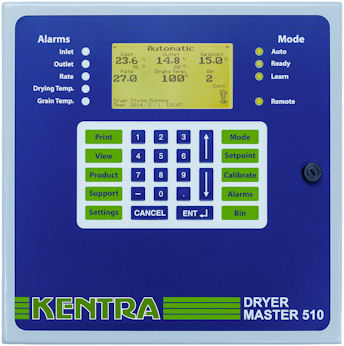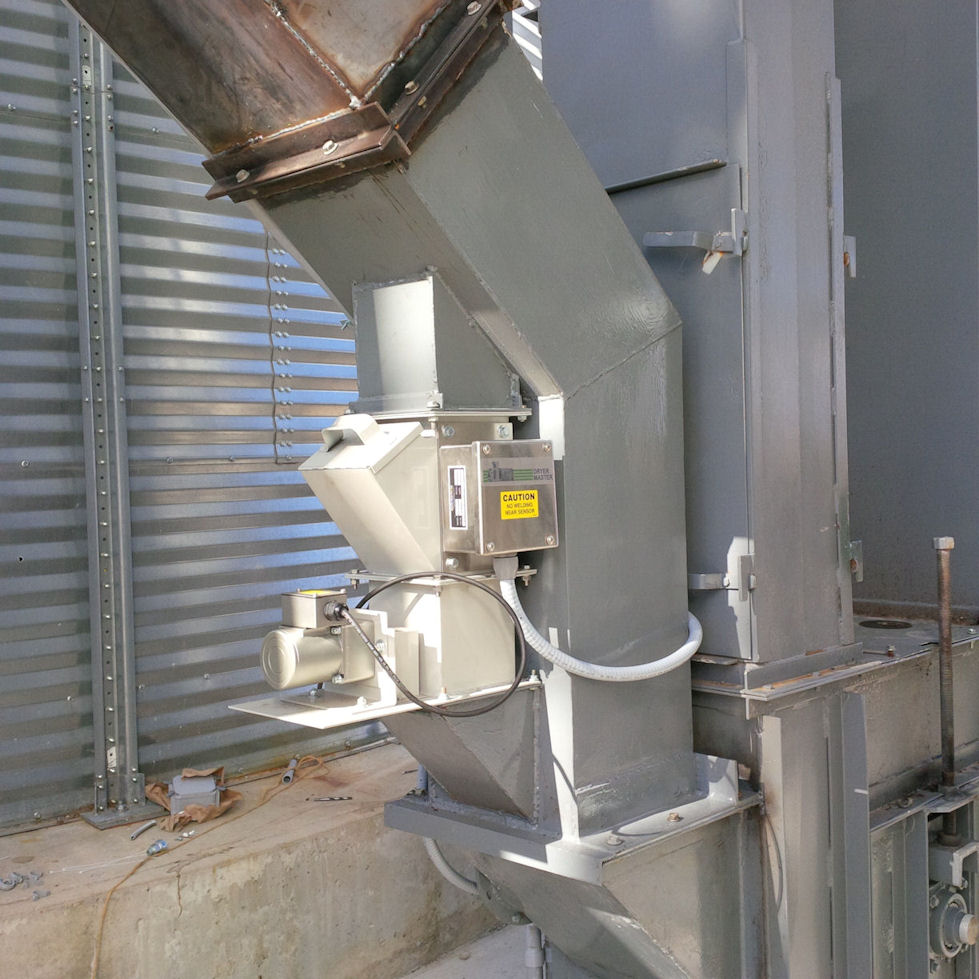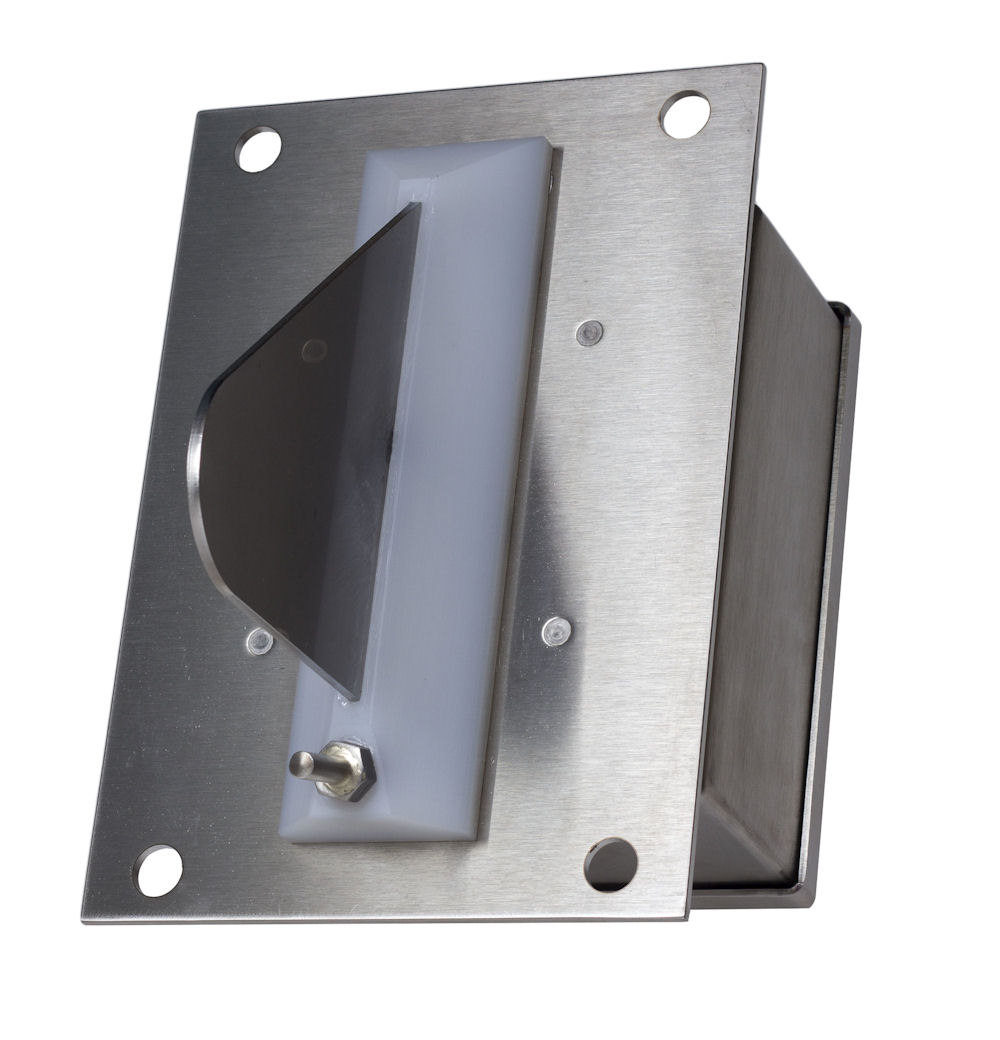
A new control system designed to provide reliable drying of grain and other combinable crops with minimal manual intervention will be launched at the CropTech event by Kentra, one of the UK’s leading crop dryer manufacturers.
The Dryer Master DM510 control unit and software can be retrofitted to most continuous flow crop dryers or embedded into the control panel of a new Kentra dryer. Both installations use a pair of moisture sensors – one at the intake, one at the discharge point – to calculate and automatically adjust how long grain needs to spend passing through the dryer to achieve the target moisture level set by the operator.
Barry Higginbottom, Kentra managing director, says: “This proven technology from Canada can save valuable time otherwise spent monitoring and managing a dryer manually and can bring about significant savings in terms of energy use and unnecessary weight loss resulting from over-drying.”
The Dryer Master system comprises a highly accurate moisture sensor installed in the conveyor line taking grain from the dryer and an inlet sensor usually fitted at the top of a continuous flow dryer that detects changes in the moisture content of incoming grain. The control software uses the readings from these sensors to calculate the residence time needed to hit an average target moisture and adjust the discharge rate accordingly.

“The ability to predict when, say, wetter incoming grain will fill the dryer takes all the guesswork out of managing the system and results in more accurate and consistent drying,” says Mr Higginbottom.
“With manual monitoring and control, you’re always working behind the curve, altering settings after the event – when the combine opens up in damper crop around a field boundary, for example, or as crops lose moisture after a dewy morning,” he adds. “With intake moisture sensing and predictive software, grain drying becomes more accurate and consistent.”
Both sensors automatically compensate for grain temperature to ensure accurate readings and calibrating the post-drying sensor involves nothing more than pressing a ‘calibrate’ button on the control panel, putting a couple of samples through a moisture meter and entering the readings.

“We don’t advocate a ‘set and forget’ approach; it’s good practice to have someone supervising the drying operation and we recommend repeating the sensor calibration two or three times a day as a check,” says Barry Higginbottom. “But the accuracy of this automated control system will give the store supervisor confidence to attend to other aspects of harvest management without neglecting the dryer.”
Significant cost saving is the other potential attraction of the system, he adds: “Manual grain dryer management involves responding to samples taken after the grain has been dried and to avoid being caught out there is a tendency to err on the side of caution, which often results in a lot of grain being dried beyond the optimum.”
That is costly in energy – bearing in mind it takes more energy to move grain from 14% to 13% mc than from 15-14% – and also in weight loss.
“Assuming a grain price of £100/tonne, a farm drying 20,000 tonnes of grain has only to save 1% moisture in over-drying to regain £20,000 in lost revenue,” Mr Higginbottom points out. “A farm drying 4-5000 tonnes of grain a year would recoup the £10,000-£12,000 all-in purchase of a Dryer Master system in three years – a bigger operator even sooner – while also saving time and hassle at harvest.”
The Dryer Master display provides a quick view of drying status and settings, a manual option for operators who prefer to make their own discharge rate decisions, a number of alarm alerts and a print-out for records. Where Internet access is available, the display is duplicated on a web browser accessible on a farm office computer or remotely via a smart phone or other mobile device.
